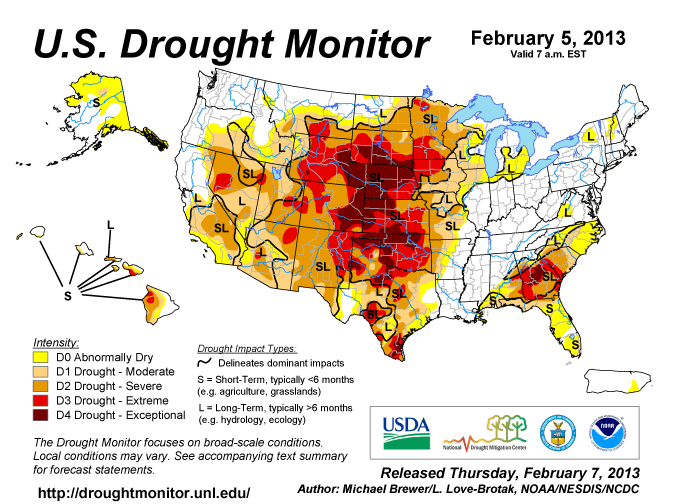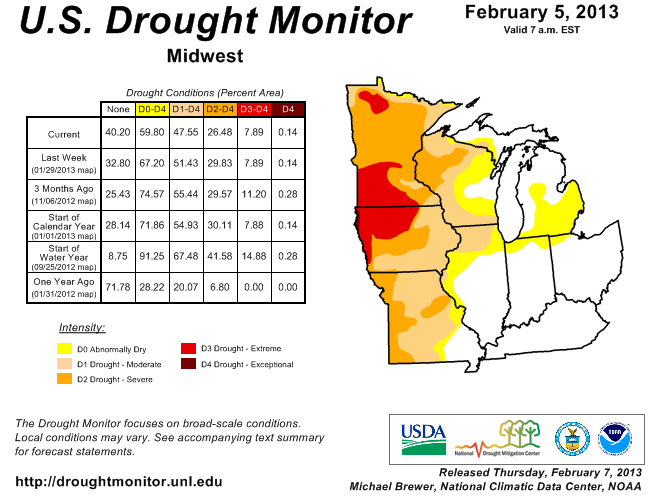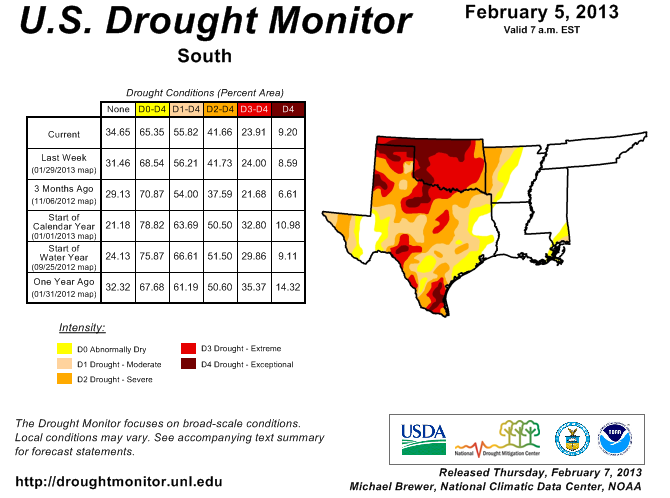Further Drought Improvements Across Eastern Corn Belt

According to the National Drought Monitor, 40.2% of the Midwest is now drought free, compared to 32.8% last week. With most of the eastern Corn Belt now drought-free, focus is on mending the drought in the western Corn Belt and no change was made to the drought in Iowa. No change to the drought was also seen across the High Plains, with 77.47% of Nebraska covered by "Exceptional" drought.
The monitor notes: "Conditions continued to improve in the Midwest. The area from Missouri up through eastern Iowa and into Illinois, Indiana, and Ohio saw relief of Severe (D2) and Moderate Drought (D1) and Abnormal Dryness (D0). Additionally, South Dakota saw small improvement in Exceptional (D4) and Extreme Drought (D3). Precipitation fell in other areas of this region but frozen soils led to high runoff and little moisture seeping in to the ground. Improvements were largely kept to areas with soil temperatures above freezing."
Meanwhile across the South, 34.65% is now drought free, which compares to 31.46% last week. "The areas from eastern Oklahoma through Arkansas saw significant improvements in Extreme (D3), Severe (D2), and Moderate Drought (D1) and Abnormal Dryness this week with the passing of the January 29-30 storm. In southern Texas and the Oklahoma Panhandle, areas of Exceptional (D4), Extreme (D3), Severe (D2), and Moderate Drought (D1) expanded as did Abnormal Dryness (D0). In South Texas, this was largely due to dry conditions compounded by above normal temperatures and wind," states the monitor.
Looking ahead to February 7-11 the monitor notes there is an enhanced probability of precipitation moving from the West Coast early in the period, across the central U.S., and into the Midwest and Mid-Atlantic by the end of the period. Above-normal temperatures are expected to move from the central U.S. early in the period to also cover the East and Gulf Coasts by the end of the period.










